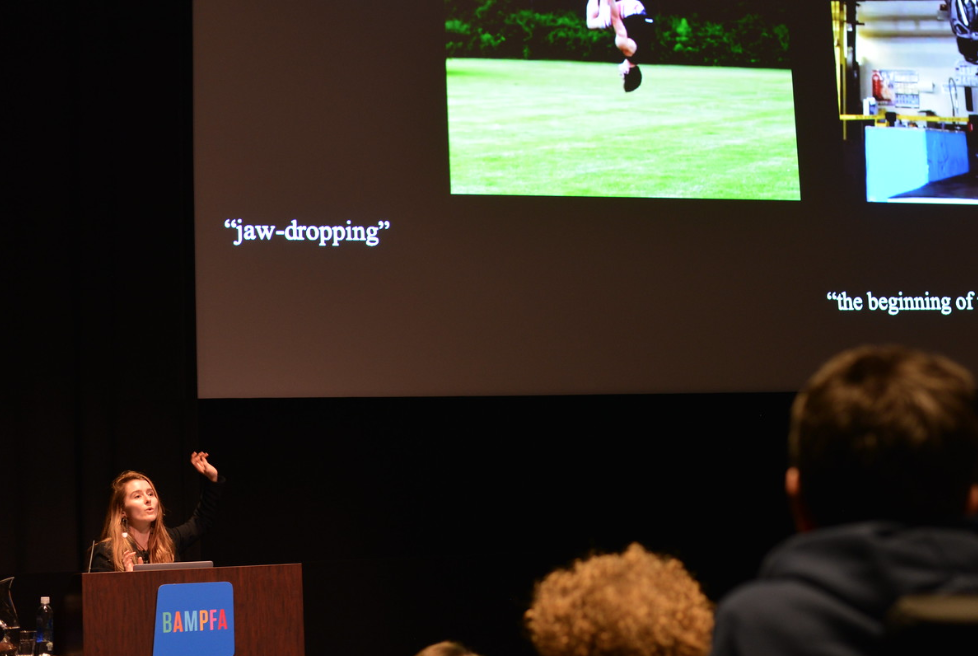ATC Revisited: Amy LaViers

Recap by KC Forcier, the 2019-2020 Graduate Liaison for the Art, Technology, and Culture Colloquium.
Dancing with Robots: Amy LaViers on Robots and Expression
How does it feel to move alongside a robot? By what measure do humans outperform robots? And vice versa? What new ideas can robots help us express? How do you show people that their bodies are powerful and creative? Can machine bodies express the same ideas as human bodies? These are some of the fundamental questions that engineer and choreographer Amy LaViers explores in her work. LaViers uses a dancer’s deep knowledge of human motion to study and design robotics. Yet LaViers is not interested in just replicating human motion: her work is motivated by the vision of robots dancing with, not as, humans. She resists the belief that technology can or should merely replicate human motion.
LaViers used the example of a robot called Atlas, a humanoid robot designed by Boston Dynamics, which can successfully perform a backflip - a feat of athleticism that would be hard for most humans. Quotes in the popular press hailed the robot’s acrobatics as “jaw-dropping,” “perfect,” “Olympics-ready,” and “the beginning of the end.” Yet, LaViers argued, there really isn’t a comparison between the action performed by Atlas and a backflip as executed by a trained gymnast, for the crucial reason that a human gymnast’s backflip has an expression. If you compare the robot and the gymnast in terms of a task accomplished - rotating and landing upright - then they do perform the same action. But this is not all there is to a gymnast’s backflip. The human gymnast’s movements, in addition to performing the task, also express something - for example, in the exuberance with which the athlete extends her arms on landing.
Dance, as the representation of ideas through bodily motion, provides a different lens for thinking about robotic motion. LaViers’ research focuses not just on what tasks are accomplished by robotic motion, but what is perceived and what is communicated by these motions. She observes that functional robots express things with their motions - if unintentionally - all the time. LaViers advocates for a robotics that takes seriously the role of embodied communication and physical expression. At the same time, she doesn’t want to lose sight of how powerful and creative the human body is. LaViers concluded her talk by stating that while she aims to create genuinely useful machines, “I hope you have an appreciation of what an incredible mover you are already.”

